
Frequently Asked Questions
Here you will find some answers to questions frequently asked about our postgraduate courses at CAT. If the answers do not hold the information you are looking for, please contact us.
General
What facilities are available at CAT?Most of the lectures and tutorials you would attend at CAT are located in the Wales Institute for Sustainable Education (WISE) building. This includes:
- A 200-seat circular lecture theatre made from rammed earth
- Large classrooms/workspaces and further smaller seminar rooms
- A computer suite
- Foyer with games, books and a bar
- 24 en-suite twin bedrooms, overlooking a large open roof garden and decking
On-site we also have:
- Vegetarian Restaurant
- CAT EcoStore
- Straw Bale Theatre
- Further student accommodation on-site in CAT’s bunkhouse style Eco Cabins
- Flexible exhibition and study space for student projects and work
To learn more about the facilities at CAT click here
We help students make the transition back to studying and support them in regaining confidence and other aspects of their work. CAT attracts a diverse range of people, from the UK and across the world, from a wide variety of different backgrounds, life and work experiences and ages.
If you would like to talk to us about getting back into studying, please contact us.
Yes, all of our postgraduate programmes are validated by an accrediting university (either Liverpool John Moore’s University or the University of East London) and are recognised internationally. Your qualification at the end of the programme will be joint with CAT and the validating university.
During the summer season (from Easter to end of October), access to the site is via the cliff railway, which has carriages that are adapted to receive wheelchairs. Free disabled parking spaces are available very close to the bottom station. We offer free entry to the Visitor Centre for carers.
During the winter months (from November up to Easter), the railway is closed and access to the Visitor Centre is via the woodland walk or drive that starts next to the bottom station building. Disabled parking spaces are available at the top of the drive.
Our displays are located throughout a 7-acre, open-air site. Most of the pathways around site are made up of compacted aggregates which are mostly level; however wheelchair users may require assistance in using these paths, particularly during periods of inclement weather. All the buildings have ramped or level access, with doors, entrances and corridors wide enough for a wheelchair. There are wheelchair accessible toilets at the bottom car park reception building and near the shop at the top of the cliff railway.
We have electric mobility scooters and a wheelchair available to hire free of charge, just call 01654 705950 in advance of your visit.
CAT is committed to building a learning community founded on equality of opportunity that embraces diversity. Respecting individuality and difference, we aim to be proactive in supporting students with additional needs.
Some students will have health issues which can affect their learning and require individual attention, and we will make reasonable adjustments to support these students in their learning wherever possible.
We encourage declaration of additional learning needs and/or disabilities when you apply – and then later on the enrolment form – followed by disclosure of any further information with our Student Support Team well before starting the course, so that appropriate support can be offered at the earliest opportunity. If you feel that your disability or additional needs could impact your learning experience at CAT, please refer to our ‘Student Support and Welfare Guide’ on our Current Students page.
If you’re interested in applying and wish to discuss your requirements in more detail, do get in touch.
Free student Wi-Fi is available within and close to several buildings on-site, including bottom and top station, the information centre/gallery, the café/shop and the WISE building. As a student of CAT, you will be able to log into the CAT student Wi-Fi using your CAT email address.
No, our courses are validated by our accrediting universities but are created and delivered by CAT and our staff.
All of your lectures and tutorials will either be at the Centre for Alternative Technology or can be accessed online via our Virtual Learning Environments for distance learning.
Distance learning is available for all courses except the Masters in Sustainable Architecture which must be completed on-site, due to the nature of the course.
Get a real sense of what it’s like to study at CAT by visiting us virtually or on-site on one of our Graduate School open days, click here to learn more .We offer open days throughout the year, running up to the application deadlines for our courses in the spring.
Or if you’d like, come and experience our visitors centre, which is open all year round (except for our Christmas closure). Most of our Graduate School staff (similar to our students) attend on-site teaching weeks and then work from a distance outside of these times. If you’d like to find out more about our Graduate School and courses, we recommend you book to attend one of our Graduate School open days or get in touch to arrange to talk with staff.
Our courses are designated for student finance each year by HEFCW (Higher Education Funding Council for Wales). Once we receive designation, eligible students may be able to apply for a Postgraduate Loan to cover both tuition fees and living costs via Student Finance England or Student Finance Wales.
MArch Sustainable Architecture students may also be eligible to continue with their professional undergraduate loan through Student Finance England and Student Finance Wales, or they can apply for a postgraduate loan through Student Finance England.
CAT offers a number of bursaries to new students, created thanks to generous donations from charitable trusts, supporters and members of CAT. Our bursaries range in criteria and have application deadlines, so we recommend you read all the information about each bursary before applying.
Over 2,000 students have graduated from our courses over the past 15 years, and have gone on to use the knowledge and skills learnt with us in a range of environmental and sustainability careers. From architecture and energy management to environmental policy or consultancy, CAT graduates work across government, industry, charities and academia, with many running their own businesses or setting them up after they graduate.
Master of Science (MSc), Master of Research (MRes), Postgraduate Diploma (PG Dip.), and Postgraduate Certificate (PG Cert.)
Can I study part-time?Yes, you can study part-time by distance or in-person, starting with the introductory September and November core modules. We then encourage you to complete a further two modules in your first academic year and the remaining chosen modules in your second academic year; you can, however, take longer if needed.
It is worth noting that, for a postgraduate student loan, you would need to complete the part-time MSc course within two years plus a six-month dissertation.
For more info on fees and funding click here
For the MRes you would study it part time over three years starting with the introductory September and November core modules. We then encourage you to complete the Applied Research Design module and another taught modules before moving onto your extended dissertation. You would study this module over two years rather than the one year full time students would complete it in.
Yes, you can study our MSc Programmes and MResvia distance learning, or in person at CAT during study weeks (one week in each eight-week module), or do a bit of both. You are asked to state your mode of study for your modules at the start of the course or each academic year (if studying part-time), which gives you greater flexibility to plan for your life outside of study.
If you choose to study a module or the entire course by distance, it is delivered through a Virtual Learning Environment platform (Moodle/Canvas) and through Microsoft Teams for the following:
- Lecture recordings, slides and lecture notes are available to download
- Online seminars
- Formative practical exercises
- Group tutorials
- Individual contact with your tutor
Also as a student of CAT and our validating partner universities, you will also have access to:
- Online libraries
- Membership of Society of College National and University Libraries (SCONUL) scheme, which provides you with access to university libraries across the UK and Ireland, national libraries and libraries from many of the UK’s colleges of higher education.
There is a good student social network, formed via developing relationships in your online seminars and through social media (currently many students are in a Facebook group, and WhatsApp groups usually get set up by students at the start of each module). Some regions have informal, student-led CAT groups of graduates and current students.
You will need an undergraduate degree in any subject or equivalent experience, knowledge or skills to study on our MSc programmes. See the entry requirements for each course on the relevant course pages. We do consider all applications, so if you are dedicated and interested and would like to discuss your suitability, do get in touch with our Graduate School Marketing Officer.
If you attend the on-site study weeks, you will have the opportunity to take part in talks, lectures, workshops, practical sessions and seminars from our academic staff and from visiting and guest lecturers. If you study by distance, you would receive lectures and seminars and, where possible, practical and workshop sessions or an alternative online.
All assessments are continual assessments including coursework assignments which aid learning and are achieved through a variety of assignments in the form of written essays, critiques, reports, case studies, numerical analyses, blogs, presentations and posters. This provides an opportunity for you to explore your personal interests in the field of professional practice in greater depth.
The MSc courses finish with a dissertation for which you would have support throughout. The MRes course finishes with an extended dissertation allowing students further opportunity to develop research skills and further explore a topic of their choice.
It may be possible to change between our MSc and MRes courses depending on the course and space available on each programme, however, it is usually discouraged as it often isn’t possible to complete the required modules in time and it is administratively very difficult to swap between awarding universities.
We recommend that you explore all your options prior to applying, including reading the various course documents online, talking with us and attending an open day.
If you have any questions please get in touch.
Yes, it is possible to start with one of our lesser postgraduate qualifications, PG Certificate (60 credits) or PG Diploma (120 credits) but if you intend to study the full MSc we recommend you commit to this from your application as we do have some courses where a specific pathway through the modules is recommended and you will commit to these modules from the start of the course. If you are considering a career in the environmental sector, an MSc will give you a more holistic overview of sustainability through further taught modules and research and employability skills through the dissertation module.
For our Postgraduate Certificates, you will usually complete the core modules which are course focused, whereas for a Postgraduate Diploma you would take the core modules and then choose from a range of optional modules to make up the rest of your required credits.
You can also exit our courses earlier than expected if you do not want to continue your studies. You could leave with either a PG Certificate or PG Diploma, subject to having taken the relevant credits and modules needed.
Each course has both core and optional modules, with many of these being shared between courses.
You can see which modules are essential and which are optional for each course on the course pages, and to find out module dates, you can download our MSc Module Timetable here.
We can also recommend pathways through our courses for part-time students if you are not sure which modules you would need to take and when, so get in touch for more information
CAT follows the standard hours of study for postgraduate level, where one credit equals a recommended ten hours of study. For our 15-credit modules, this would mean 150 hours of study.
Over a typical eight week long taught module, this is around 18 hours a week, although it’s worth considering that our teaching weeks are intensive so will exceed this. Most full-time students will have overlapping modules, so their study time will increase to around 35 hours a week. Study hours include dedicated teaching time, independent study and reading, and completing module assignments.
Master of Architecture (MArch)
Do I have to have Part I before I can do Part II at CAT?Candidates for the MArch Part 2 course must have an undergraduate degree carrying an exemption from ARB/RIBA Part I or a relevant undergraduate degree.
If you are interested in the course and have a relevant undergraduate degree that does not carry an exemption from ARB’s Part 1 examination you will be required to successfully complete the ARB’s Part 1 examination before you can register as an architect in the UK.
Further information can be obtained on the ARB website.
The current teaching team is Dr Alison Pooley and Gwyn Stacey, along with regular visiting lecturers and tutors like David Lea, Elinor Gray-Williams, Pat Borer and Zoe Quick.
In addition to the teaching staff, we have a list of over 20 leading architects from all over the UK and further afield who contribute to the course as visiting lecturers, tutors and critics. Students will also have access to tutors from related MSc programmes and from visits from CAT graduates.
All members of the teaching team for this programme have extensive knowledge and experience in sustainable architecture and the built environment.
Teaching and learning at CAT is a collaborative process. Students are valued as equals, taking responsibility for their own learning.
Our main pedagogical approach is learning by doing. Much of the course promotes practical testing and building. For this reason, we avoid conventional “crits”; instead, students are encouraged to evaluate their own work and progress with the help of tutors. We do this through open reviews in the design studio, as well as exhibitions in the community, with our “live” project clients, and by presenting to students on our other programmes.
Through the years of teaching experience at CAT, we’ve found that this method enables students to develop the confidence and capability needed to tackle the building challenges they will face once they go back into the professional environment.
Find out more about the experience of studying here or by attending one of our upcoming open days.
No, the course is a balance of architectural design and technology in which the two are integrated. We will ensure that students have a portfolio of project and design work that will be up to the high standards expected at Part II level.
Find out more about the details of studying Architecture at CAT on an Open Day.
Our students share their study experience.
ARB prescription and RIBA validation are two separate processes. Every school of Architecture has to have prescription from ARB and we run a formally recognised ARB Part II programme.
ARB is the UK’s statutory regulator of architects. ARB keeps a public register of around 33,000 architects. Every architect in the UK must meet the standards that it sets for education, training and practice. It is the sole legislative body within the UK responsible for allowing the use of the title Architect and for allowing the bearer to be a practising Architect within the UK.
We do not currently offer a Part 3 programme at CAT but students who have successfully completed our Part 2 course, and wished to complete the process of becoming an architect in the UK, have gone on to sign up for ARB/RIBA Part 3 courses at a range of other Schools of Architecture.
Yes, in 2019 we introduced a part-time version of the course which allows students to study over three years rather than two years. This spreads out the workload, making it even more flexible for you to continue to work or meet family or other commitments during the period of study.
Similar to the structure of the full-time programme, which has been designed to accommodate students who wish to maintain a limited amount of employment or other commitments, the part-time structure still requires attendance at CAT one week every month in the first and third year and around six visits to CAT during the second year for on-site teaching weeks.
If you would like further information about studying on the course part-time then get in touch.
Students have access to all of the facilities at CAT, such as shared studio space where they can meet, have tutorials and review work. There is also access to other teaching facilities contained in the WISE building at CAT.
We have a lot of space for practicals and provide more hands-on building than most architecture schools with a range of sustainable materials such as timber, straw, hemp-lime and earth.
CAT also has a diverse and inspiring range of sustainable architecture projects on-site that have been built over the years by students and CAT, including the WISE building which won the RIBA award in 2011.
We follow the standard recommended house of study for postgraduates so we recommend on average 35 hours of study a week for full time MArch students. Our on-site teaching weeks are intensive, so you may find your study hours outside of these weeks are less than the average and more during the on-site weeks.
For full time MArch students who might also be working in practice we recommend three days of study and two days of work a week, alongside the intensive teaching week every month to provide a good balance between work and study. Students on the course may also wish to concentrate fully on their studies during their final year of the course.
Related Pages

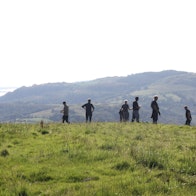
Courses
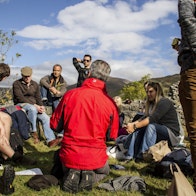
Study Experience
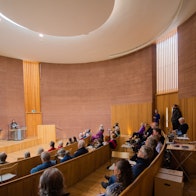
Facilities and Location

International
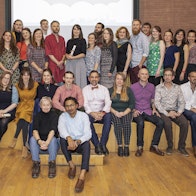
Career Pathways
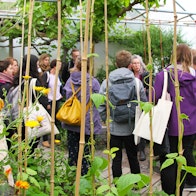
Open Days and Events

Apply
Contact us
Get in touch with the Graduate School or sign up for our Enews.
